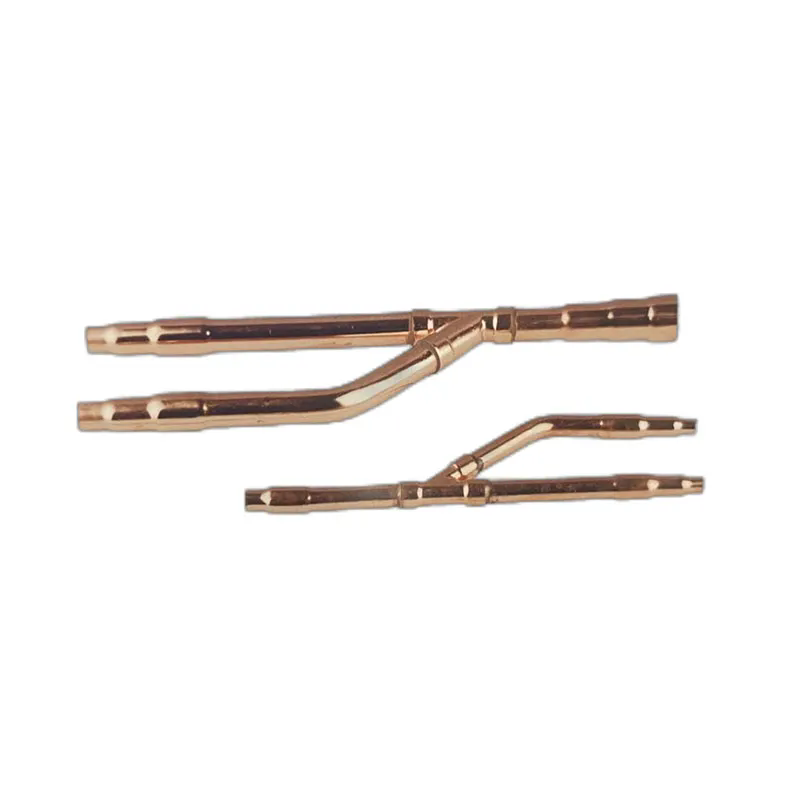What Is a Branch Pipe and Why Is It Important in Plumbing Systems?
2024-11-09
When it comes to plumbing systems, there are several components that work together to ensure water is efficiently distributed to various parts of a building. One crucial part of these systems is the branch pipe, but what exactly is a branch pipe, and why is it so important? Let's explore the role of branch pipes in plumbing and how they contribute to the overall functionality of water distribution systems.
1. What Is a Branch Pipe?
A branch pipe is a type of pipe that connects a main pipeline to smaller pipelines or fixtures within a plumbing system. Its primary function is to direct the flow of water from the main pipe to individual locations, such as faucets, toilets, or appliances. Branch pipes are typically smaller in diameter than the main pipeline, and they help distribute water to multiple areas of a building.
In essence, the branch pipe acts as a side branch or extension from the main pipeline, allowing water to flow efficiently to various parts of a home or industrial facility.
2. Why Are Branch Pipes Necessary?
Without branch pipes, a plumbing system would struggle to distribute water to different fixtures and areas. The main pipe carries the water to the building, but branch pipes are necessary to split this flow into smaller, manageable segments that reach specific locations. This is especially important in larger buildings or multi-story homes where water needs to be directed to multiple bathrooms, kitchens, and appliances.
Branch pipes also help in balancing the water pressure throughout the system, ensuring that water is delivered evenly to all fixtures, from the top floor to the basement.
3. How Do Branch Pipes Work?
Branch pipes work by diverting water from the main pipe to other parts of the plumbing system. They are typically installed at a junction or tee fitting, where the water is split between the main line and the smaller branch lines. These pipes can be connected to a variety of fixtures, such as sinks, showers, or washing machines, providing them with the necessary water supply.
The size of the branch pipe is typically proportional to the water demand it needs to satisfy. For example, a branch pipe leading to a single sink might be smaller than one leading to a bathroom with multiple fixtures, including a shower and toilet.
4. Types of Branch Pipes
Branch pipes come in various sizes and materials, and the specific type used in a plumbing system depends on several factors, such as the water supply, the size of the building, and the fixtures being connected. Common materials for branch pipes include:
- Copper: Known for its durability and resistance to corrosion, copper is often used in residential plumbing systems.
- PVC (Polyvinyl Chloride): A popular material for branch pipes due to its cost-effectiveness and ease of installation.
- PEX (Cross-linked Polyethylene): A flexible material often used in modern plumbing systems, providing easier installation and resistance to freezing.
- Galvanized Steel: Less common today but still used in older plumbing systems, galvanized steel is strong but prone to rusting over time.
Each material has its own advantages and is chosen based on the needs of the system, whether it’s for residential or industrial purposes.
5. Benefits of Branch Pipes in Plumbing Systems
Branch pipes provide several key benefits in plumbing systems:
- Efficient Water Distribution: They allow water to be distributed evenly to different parts of a building, ensuring that all fixtures have access to the necessary water supply.
- Flexibility: Branch pipes allow for easy expansion or modification of plumbing systems. If additional fixtures are added, new branch pipes can be connected to the existing network to accommodate the change.
- Cost-Effective: Because branch pipes are typically smaller than the main line, they are often less expensive to install and maintain, making them a cost-effective solution for distributing water throughout a building.
6. Common Issues with Branch Pipes
While branch pipes are essential in plumbing systems, they can also face certain issues that may affect the performance of the entire system:
- Clogs and Blockages: Over time, branch pipes can become clogged with debris, mineral deposits, or grease buildup, especially in kitchen and bathroom plumbing. This can lead to reduced water flow or even complete blockages, which may require professional cleaning or replacement.
- Leaks: Like any pipe, branch pipes can develop leaks over time due to wear and tear, freezing temperatures, or poor installation. Leaks can lead to water damage and increased utility bills, making regular inspection important.
- Pressure Imbalance: If the branch pipe is too small or if multiple fixtures are drawing water at the same time, it can cause an imbalance in water pressure. This can result in low water flow or fluctuating pressure at different fixtures.
7. Maintaining Branch Pipes
To keep branch pipes functioning properly, regular maintenance is essential. Here are some tips to ensure they remain in good condition:
- Inspect for Leaks: Check for visible signs of leaks around joints or connections in the branch pipes. If you notice water damage or damp spots, it’s essential to address the issue promptly.
- Clear Clogs Regularly: Prevent blockages by cleaning the branch pipes periodically. Using a drain cleaner or a plumber’s snake can help clear away debris or buildup that may be obstructing water flow.
- Check Water Pressure: Ensure that the water pressure is balanced throughout the system. If there are significant fluctuations, it may be a sign that the branch pipes are too narrow or there is a problem with the system’s pressure regulator.
8. Conclusion: The Importance of Branch Pipes
Branch pipes are a fundamental component of any plumbing system. They ensure that water is effectively distributed throughout a building, providing access to all necessary fixtures. Whether you're building a new home, renovating an existing one, or maintaining a commercial property, understanding the role of branch pipes can help you ensure the smooth operation of your plumbing system.
By choosing the right size, material, and installation method, you can maximize the efficiency of your plumbing system and prevent potential issues that may arise with your branch pipes.



